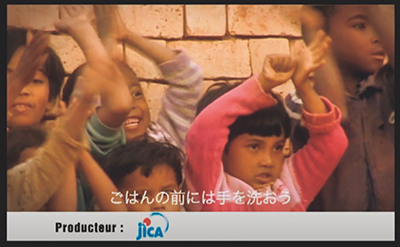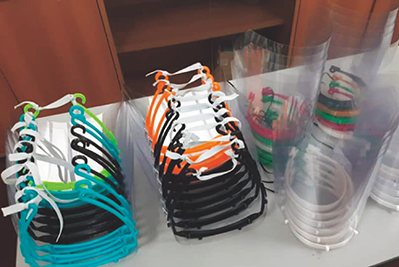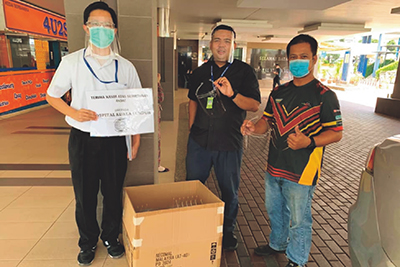(2) Japan’s Assistance Utilized in the COVID-19 Crisis
(See “Measures Against the COVID-19 Pandemic” for details)

A Japan Overseas Cooperation Volunteer who was dispatched to Madagascar in 2010 made and released a handwashing song to communicate the importance of handwashing to children. The song has been sung by all age groups from adults to children in Madagascar and is still being sung today note 4. (YouTube: https://www.youtube.com/watch?v=xRzjhj7LWoc) (Photo: JICA)
Based on the concept of human security, Japan has traditionally provided assistance in various sectors, including health, water and sanitation, education, and gender, to achieve the SDGs. Such Japanese assistance has made a significant contribution to the people of developing countries during the pandemic.
In particular, in the health and medical care sector, Japan has experience in eradicating malaria and other infectious diseases in the post-World War II era, which led to Japan’s highest level of life expectancy in the world. Japan has shared such experience and knowledge with countries around the world. For more than 65 years since it began providing ODA, Japan has implemented wide-ranging assistance in the health and medical care sector and fulfilled a leading role in the international health field, and its efforts have been highly appreciated by many countries. Some examples include the promotion of UHC based on Japan’s own experience, the use of mosquito nets to prevent malaria, the encouragement of handwashing, the distribution of Maternal and Child Health Handbooks, and the improvement of water supply and sewerage systems.
For responding to COVID-19, developing countries are using medical and water supply facilities and medical equipment constructed and provided, respectively, with Japanese assistance. Furthermore, healthcare workers and public health experts who have received training through Japan’s steady technical and capacity-building supports are playing an active role on the front lines in their respective home countries (see “Stories from the Field” regarding the Noguchi Memorial Institute for Medical Research in Ghana).
In addition to assistance in the areas of health and medical care and water sanitation, Japan has helped introduce distance learning by providing information and communication technology (ICT) supports for children who are unable to attend school due to a lockdown (see also “Master Techniques from Japan to the World”). Japan has also been providing assistance for the production of personal protective equipment (PPE), such as medical masks, gowns, and goggles, in developing countries through industrial human resources development support. In such ways, Japan’s assistance to date has been useful in containing the pandemic.


Malaysia-Japan International Institute of Technology staff delivering face shields made with 3D printers (left) to a hospital (Photo: JICA)
- Note 4: More information is available on JICA’s COVID-19 website (https://www.jica.go.jp/COVID-19/en/index.html).
